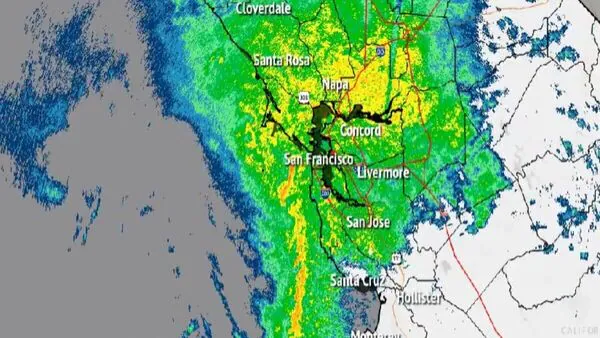
Unprecedented Weather Hits Downtown San Francisco
As strong storms swept through the area early Saturday morning, downtown San Francisco was under a tornado warning for the first time in recorded history. This was only a week after the Bay Area was rocked by widespread terror due to a tsunami warning.
Around 6:14 a.m. PST, the storm system moved northeast of the city, ending the tornado threat, according to the San Francisco Department of Emergency Management (SFDEM).
“Take Shelter Immediately,” Emergency Officials Advise.
In a precautionary alert, SFDEM urged residents to seek safety:
“Now seek refuge in an internal chamber or basement on the lowest floor of a strong building. Go to the nearest substantial shelter and shield yourself from debris if you are outside, in a mobile home, or in a car.
Along the coast, sustained winds of up to 40 mph were predicted by the National Weather Service (NWS), which also issued a high wind warning and flood advisory. San Francisco International Airport saw its second-highest recorded wind gust since 1945, at 83 mph.
Damage and Power Outages Throughout the City
Strong winds caused trees and power lines to fall across San Francisco, leaving over 10,000 homes without electricity as the storm wreaked havoc. Intense gusts shook palm palms in the city’s downtown, as shown in dramatic videos posted on social media.
Emergency personnel had an even harder time clearing the streets and restoring power after receiving reports of fallen branches and debris strewn over the highways.
Why Was a Tornado Warning Issued?
A whirling weather cell near Ocean Beach and San Francisco State University caused meteorologists to issue a tornado warning shortly before 6:00 a.m. PST. Experts were concerned that a waterspout might form and even proceed onshore, even though no tornado made landfall.
Residents were instructed to relocate to the lowest internal room of their homes and stay away from windows during the roughly 20-minute alert. Although there were major interruptions due to the high-speed winds, no injuries were reported.
Rare Weather Occurrences in San Francisco
A week prior, there had been a tsunami panic, which was followed by this tornado warning. Nearly 5 million people along the Northern California and Oregon coastlines were under tsunami warnings after a 7.0-magnitude earthquake off the California coast on December 5. The epicenter of the earthquake was located south of Eureka, California, in the Pacific Ocean.
The occurrence demonstrated the region’s susceptibility to infrequent but potentially devastating natural disasters, even though the tsunami warning was revoked after coastal populations were evacuated as a precaution. Although there was no tsunami, experts pointed out that the seismic activity was a clear warning of the region’s vulnerability to geological dangers.
Threats from Atmospheric Rivers and Floods
An atmospheric river that was still soaking the area coincided with the tornado warning. Due to heavy rainfall and strong king tides, flash flood warnings are still in effect. Through Monday morning, water levels are expected to reach five to twelve feet. Furthermore, reports of wave heights of up to 22 feet have been made, which increases the possibility of coastal flooding.
Localized flooding was recorded in a number of localities, with low-lying regions experiencing dangerously high water levels. Residents in flood-prone areas were advised by emergency response teams to stay away from unnecessary travel and to be ready for possible evacuations.
Historical Context and Readiness
Although there are typically nine tornadoes in California each year, downtown San Francisco had never before seen such a warning. Residents must remain alert and ready for increasingly erratic weather patterns in light of this historic event.
Climate experts caution that global climate change may increase the frequency of extreme weather occurrences like this one. To meet future difficulties, cities like San Francisco might need to make investments in more reliable emergency response systems and infrastructure.
Although there is no longer a direct tornado threat, officials advise locals to keep an eye on weather reports because flooding, high winds, and unstable weather are still potential hazards in the area. Residents are reminded of the value of readiness in the face of changing natural hazards, and the city’s resilience was put to the test.